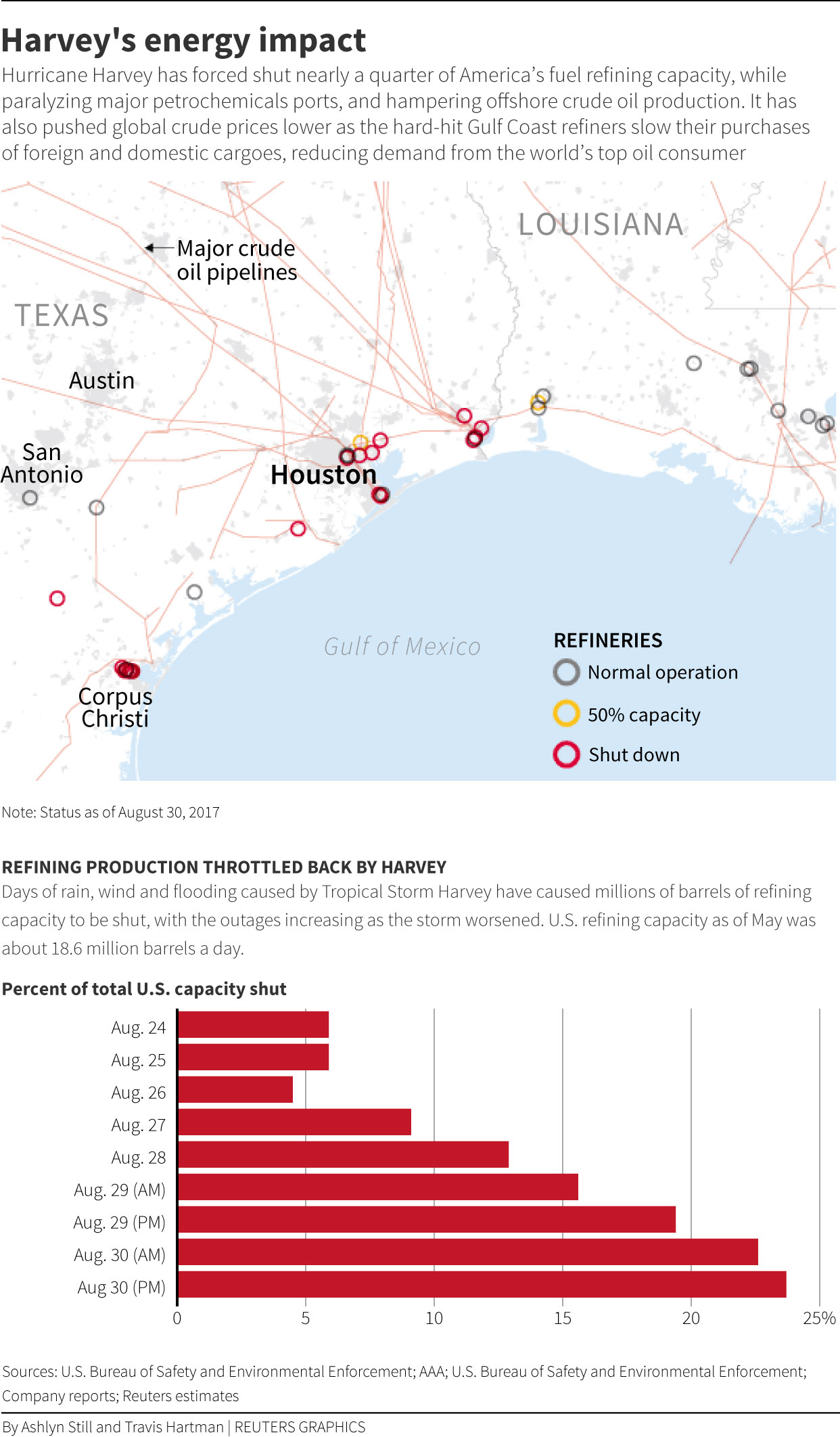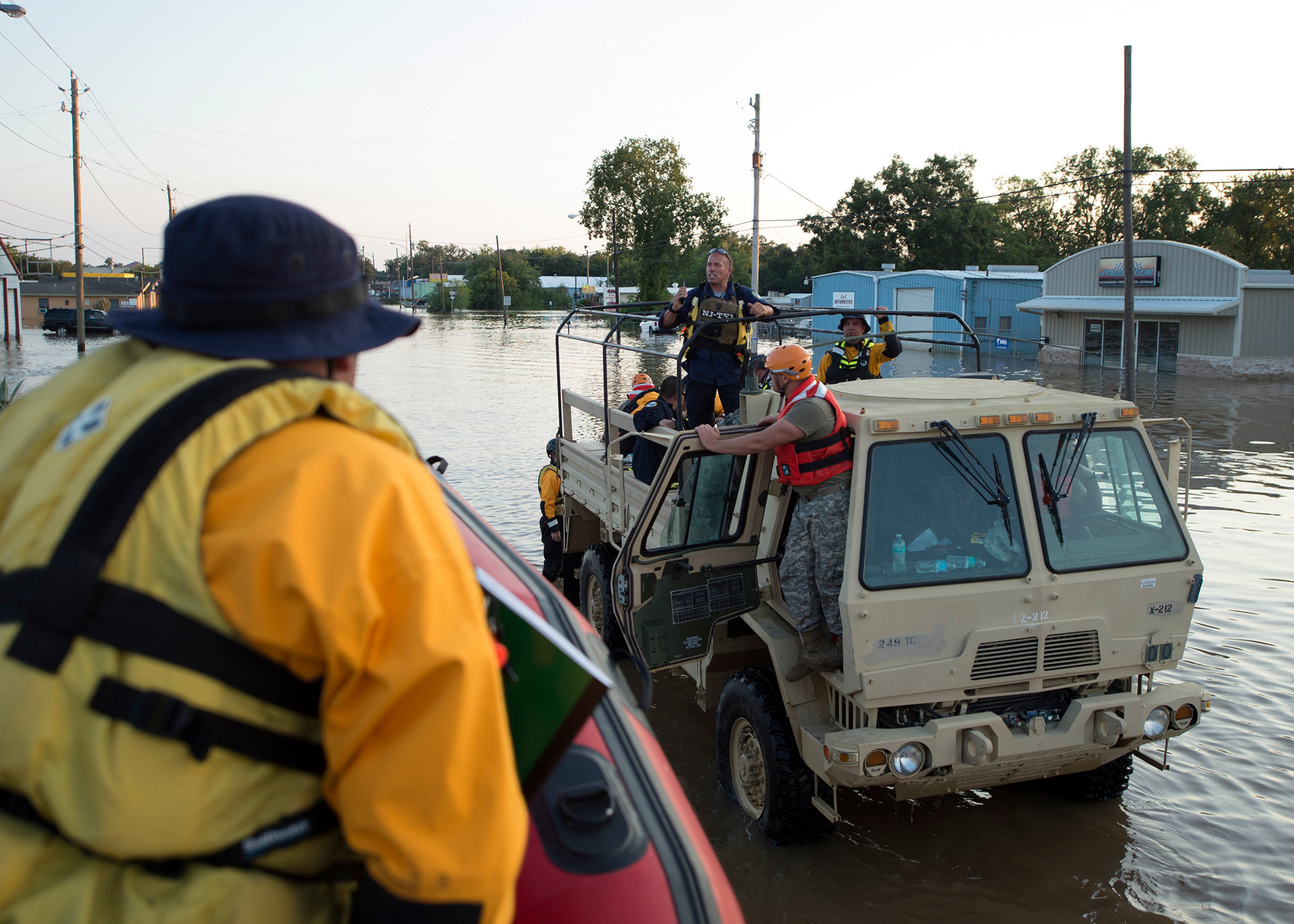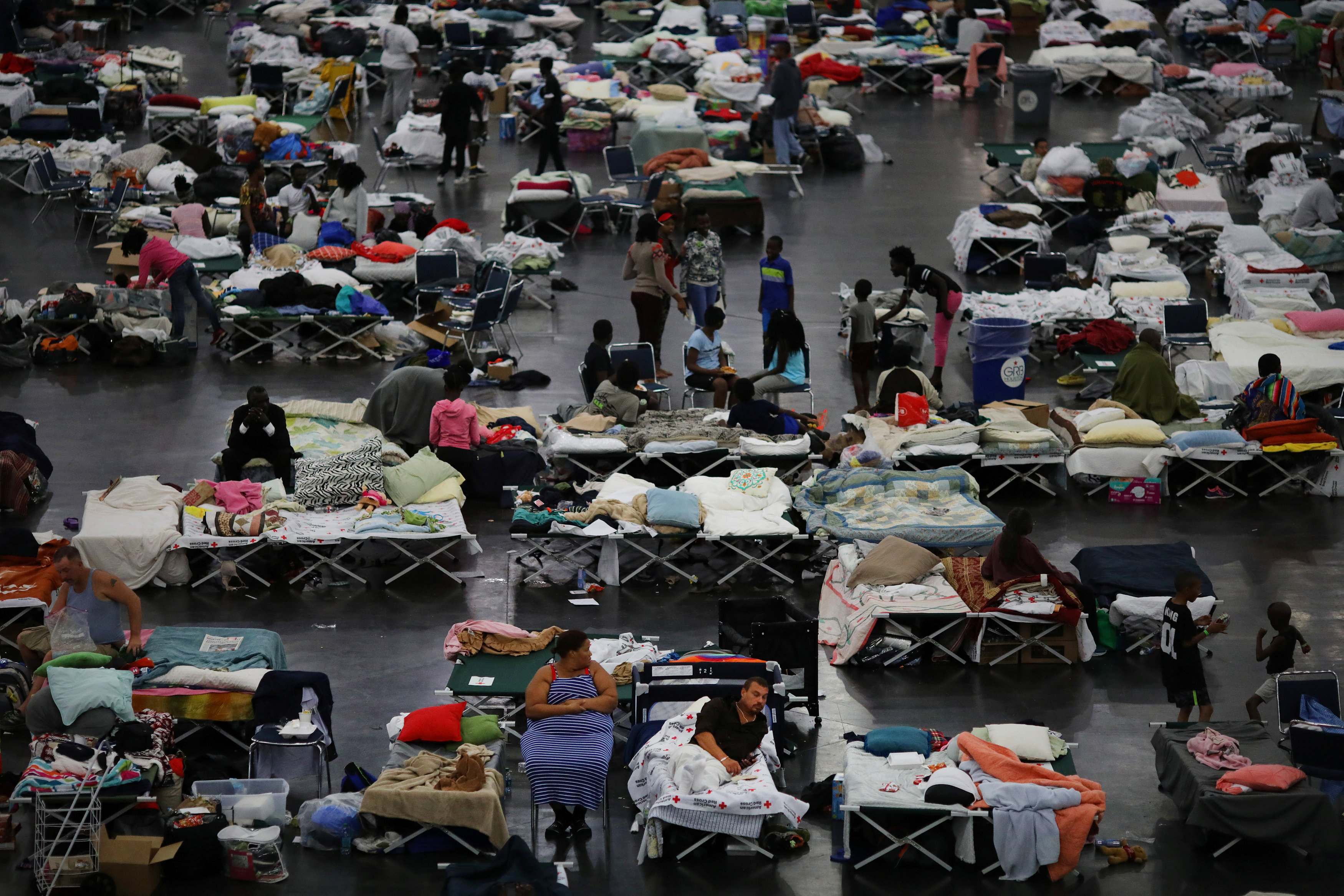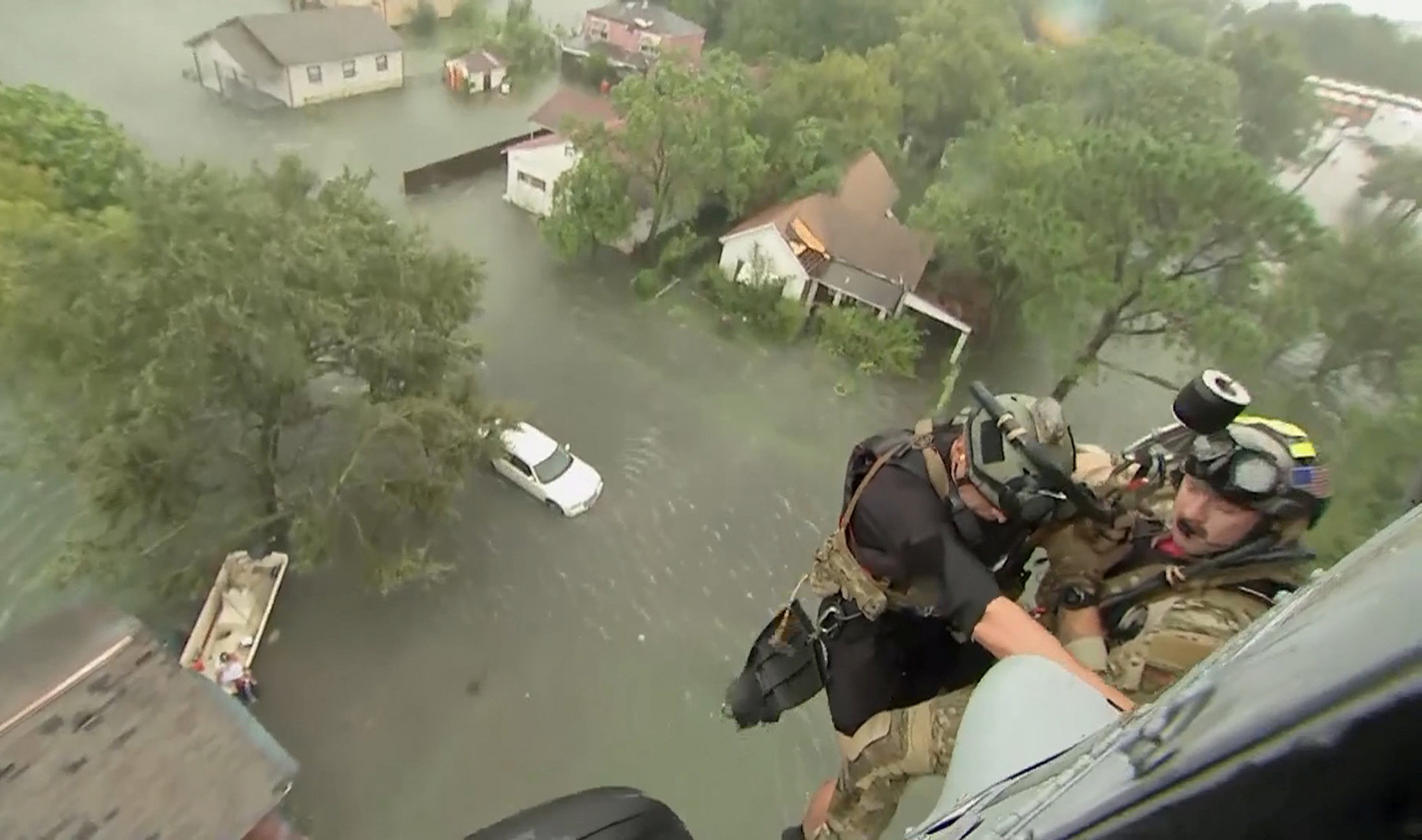
By Richard Cowan and Susan Cornwell
WASHINGTON (Reuters) – President Donald Trump, siding with Democrats over his fellow Republicans, agreed on Wednesday that Congress should pass an extension of the U.S. debt limit until Dec. 15, a government funding bill covering the same period and disaster aid for Hurricane Harvey victims, Democratic leaders said.
Top Senate Democrat Chuck Schumer and top House of Representatives Democrat Nancy Pelosi made the announcement after a meeting with Trump at the White House, along with the Republican leaders of Congress.
“Both sides have every intention of avoiding default in December and look forward to working together on the many issues before us,” Schumer and Pelosi said in a statement.
A source briefed on the meeting with Trump said Treasury Secretary Steve Mnuchin and all Republicans at the White House meeting argued for a debt limit increase for a longer period. But by the end of the meeting, Trump sided with Democrats who wanted a three-month increase.
The U.S. dollar got a boost on news of agreement on the debt ceiling, which caps how much money the U.S. government can borrow. Many conservatives in Congress are loath to raise it without spending cuts.
The Treasury Department has said the ceiling must be raised in the next few weeks. If not, the government would be unable to borrow more money or pay its bills, including its debt payments. That could hurt the United States’ credit rating, cause financial turmoil, harm the U.S. economy and possibly trigger a recession.
Trump is heading into the toughest legislative stretch of his presidency, with lawmakers facing several pressing legislative priorities.
Those include Harvey disaster relief, raising the debt ceiling by early October to prevent an unprecedented default on U.S. government debt, and passing legislation for federal spending in the fiscal year that begins on Oct. 1 to avoid a government shutdown.
“We have many, many things that are on the plate,” Trump told reporters at the beginning of a White House meeting with the congressional leaders.
“Hopefully we can solve them in a rational way. And maybe we won’t be able to. We’ll probably know pretty much at the end of this meeting or the meetings that we’ll be having over a short period of time,” Trump added.
Trump on Tuesday also gave a Congress six months to pass legislation to decide the fate of the 800,000 so-called Dreamers after rescinding a five-year-old program that had protected them from deportation.
Earlier, House Speaker Paul Ryan said any legislation to address the Dreamers would also need to address border security, a position sure to antagonize Democrats. Ryan also said any immigration legislation the House would consider would have to have the support of Trump.
Schumer urged Republicans to put forward legislation protecting the Dreamers without other issues attached.
The House on Wednesday approved roughly $8 billion in initial emergency aid for relief and rebuilding after Hurricane Harvey, which tore into Texas on Aug. 25. The measure, which provides $7.4 billion for the Federal Emergency Management Agency and $450 million for the Small Business Administration, will now go to the Senate and, barring unexpected setbacks, could be on Trump’s desk to sign by the end of the week.
(Additional reporting by Jeff Mason, Amanda Becker, Doina Chiacu, Richard Cowan, James Oliphant and David Morgan; Writing by Will Dunham; Editing by Alistair Bell)

















